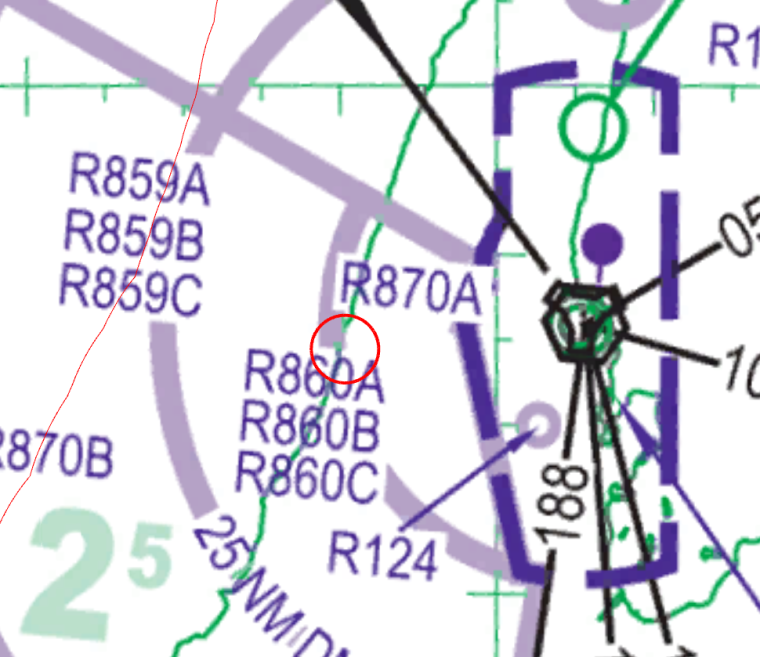On this page

Submit feedback to
The Institute for Astronomy (IfA) of the University of Hawaii (UH) is seeking feedback on a proposed Temporary Restricted Area (TRA) to support the flight of a spectrometer with a kite during the 2023 eclipse to be launched with a 1000 metre (m) tether.
The issue
- The National Aeronautics and Space Administration (NASA) is funding a technology demonstration for observing from a tethered kite
- affected days include 17, 19 and 20 April 2023
- 43 kilogram (kg) total weight kite and spectrometer payload flown up to an altitude of 3,500 feet (ft) above mean sea level (AMSL)
- kite and payload are an introduced hazard to flights in the area in Class G airspace.
Purpose
Technology demonstration of solar eclipse observations from a kite up to 3,500 ft AMSL with a 22 kg payload.
The Institute for Astronomy (IfA) of the University of Hawaii (UH) has received funding from NASA for a technology demonstration to launch a spectrometer with a kite during the 20 April 2023 total solar eclipse up to a height of 3500 ft. The goal is to fly above clouds, if present. Since this is the first such demonstration, a height of 1000 m is planned for this first test run, even if the weather is clear. The most critical elements for launching the kite are:
- the wind speed, preferably to exceed 7 metres/second
- a clear area of at least 1 kilometre in radius away from power lines.
The kite is a box-type Cody kite with a ‘wing’ span of 6.5 m. The total weight is: kite (22 kg), 1000 m tether line (6 kg), and payload (between 12 and 15 kg) that will hang 50m to 100m below the kite.
It will be launched with a 1000 m long tether attached to the ball of a tow bar on a motor vehicle. The tether line will be first stretched horizontally on the ground for 1000 m. A bobbin-type wheel will be rolled over the tether, by two operators. Its role is to change the direction of the tether from horizontal to vertical as the kite starts to lift off and the wheel is rolled back towards the car, as shown in the diagram below. The kite can be rolled back in 15 mins (i.e. the approximate time it takes to walk 1 km) or up to an hour if the winds are strong.

To ensure tether visibility, coloured plastic ribbons can be tied to the tether at 50 – 100 m intervals. At a height of 3300 ft above ground level, the 6.5 m span of the kite will have an angular extent of 0.006 radians or 0.34º. For comparison, the angular extent of the Sun is 0.5º. The kite will not obstruct anyone’s view of the corona if the person on the ground is within 1 km of the launch site. (The kite with a wingspan of 6.5 m is about the size of a small airplane.)
Impacted Airspace
A TRA of 2.0 nautical mile (n mile) radius from the launch site near Bungarra campground (-22.259501S, 113.842703E) to an altitude of 4000 ft AMSL is proposed to be active on the following days and times.
- Monday 17-April-2023 12:00 to 20:00 Australian Western Standard Time (AWST) for tests
- Wednesday 19-April-2023 12:00 to 20:00 AWST for tests
- Thursday 20-April-2023 06:00 to 13:00 AWST for actual observations that include the total solar eclipse.


To ensure a successful flight during the total solar eclipse, one test flight is planned on 17 April. This will allow enough time for modifications/adjustments if needed before the day of the eclipse. To ensure that the kite will be airborne ahead of the eclipse, we propose to launch the kite to its maximum altitude early on the morning of 20 April, when wind conditions are optimal. The kite will be pulled down after totality.
Aviation Risk and Mitigation
There can be of the order of 30 flights in and out of Exmouth and Learmonth with the number expected to increase significantly leading up to the solar eclipse on 20 April. Feedback is being sought from aviation operators in the area to determine whether the proposed TRA has an impact on their activities.
The kite requires a 2 n mile airspace exclusion that includes a drop zone should the kite be required to glide down on its own. The kite and payload would descend to the ground, most likely inside the National Park, within 6 minutes. In the event that the tether to the payload breaks, the payload would descend to the ground in 3 minutes with a parachute.
The 1000 m long tether will have red flags every 50 to 100m. The 6.5m x 4m x 3m red and blue coloured box kite is readily visible should an aircraft inadvertently approach the kite. The payload parachute coloured red and black is also readily visible. There will also be an ADS-B transmitter on the payload. The crew can be contacted via VHF aviation walkie talkies. Under nominal conditions with the kite attached to the tether, the kite can be retrieved between 15 minutes and up to an hour in very strong winds.

TRA Learmonth
- Lateral Limits: Within 2 n mile radius of 22.2595S 113.84E
- Vertical Limits: Surface to 4000 ft AMSL
- Controlling Authority: Institute for Astronomy of the University of Hawaii